
|
      
|
 |
Springbank Distillery
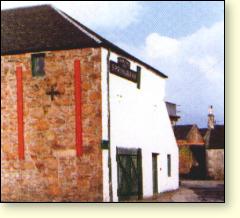
 |
|
Location: Campbeltown, Argyll
Hours: Visitors welcome by appointment
Group bookings, max. 10
No reception centre or shop
Phone: 01586-552085
Fax: 01586-553215
|
The family who own Springbank are direct descendants of the smugglers who originally made their illicit whisky on the very same spot. The distillery to this day is licensed to J. & A. Mitchell & Co. Ltd. and the present managing director is the great-great-great-grandson of the founder.
The ledger of a Campbeltown coppersmith from the early 1800s shows that Archibald Mitchell had a still but he never did anything about getting a licence. Although nothing shows in the official records until 1837, Springbank is thought to have been built on the site of the illicit operation in 1828 and the location seems to have been something of a 'Distillers' Row' since Longrow, Rieclachan, Union, Springside and Argyll distilleries were all immediately adjacent. The Springbank buildings in use today are still the original ones of 1828 but the expanded premises also take in the remaining vestiges of all these other distilleries.

At Springbank the malt is still matled in-house, in the traditional way.
|
The Mitchells were one of three or four distilling dynasties in Campbeltown and they were involved with many other distilleries around the town through members of the family.
The distillery survived the catastrophic loss of reputation suffered by Campbeltown whisky in the 1920s although the depression caused it to close in 1926 for seven years. Springbank has come to be keenly appreciated since the 1980s saw the surge of interest in single malt whiskies and it is a top-selling Scotch malt in the important Japanese market. When the Duke of Argyll launched his own brand of prestige, export scotch 15 years ago, it was Springbank malt whisky that went into the bottles.
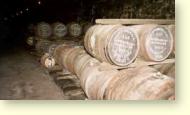
Springbank experiments with different types of barrels.
|
Unusually, possibly uniquely, the whole process of whisky production by traditional methods is carried out at Springbank. The barley is malted, the peat is cut by distillery staff, the malt is dried on a kilning floor and the matured whisky is bottled. Everywhere else in Scotland, some or all of these processes are carried out by specialist operators on behalf of distilleries. Glenfiddich is the only other distillery in Scotland where bottling is done in situ.
The malt dries fast at Springbank, thanks to blown air that both penetrates the beds of malt and allows more concentrated permeation of the grains by the peat-smoke. Springbank is, nonetheless, a light-to-medium peated whisky.
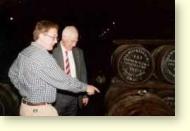
Active management, and a long line of unchanged owners make Springbank special.
|
There are three stills and the way they are used has caused debate as to whether the spirit is, or isn't, triple-distilled. In fact, only a proportion of spirit is distilled three times and it seems to enhance both the mellowness and flavour of the final distillate. A naked flame (oil now, but coal until very recently) is part of the wash still's heating system and a rummager, dragged round inside, prevents yeast from sticking and burning. It does, however, allow a degree of toasting which contributes to the final Springbank flavour. A bell on top of the rummager rings as it turns; if the ringing stops, something has gone wrong and the stillman knows to investigate. All the water comes from Crosshill Loch a mile away.
The Whisky
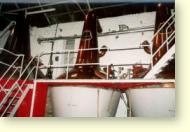
The stills at Springbank, where the so-called 2 1/2 distillation is performed.
|
Words used to describe Springbank's flavours and aromas include smoky, woody, pronounced, round, complex and peaty; also sweet, iodine-fragrant, salty and fresh. Finish is seen as rich, creamy, delicate, classy, balanced, and smooth.
The 'standard' Springbank is 15-year-old and is widely available; 21, 25 and 30-year-old are also bottled by the distillery, all at 46% vol. Other ages and vintages going back to the 1960s are available from independents. On the more offbeat side, a recent batch of fully matured Springbank whisky turned out green (i.e. grass-coloured) after having been accidentally aged in an ex-rum cask. The Japanese snapped it up. And a one-off distillation of green (i.e. ecologically correct) whisky for a Welsh organic barley farmer may lead to the production of organic whisky.
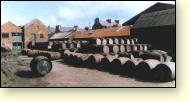
Barrels stacked outside the Victorian buildings of Springbank.
|
A second malt whisky is produced at Springbank called Longrow, the name of one of the old neighbouring distilleries which closed almost a century ago. Malt is dried entirely by peat-smoke and giving an intense, smoky, medicinal, character. The idea of two differently styled malts from a single distillery was also implemented at Lagavulin and Glenburgie. Both 16 and a 17-year-old bottlings of Longrow at 46% vol are obtainable.
Source of water
Crosshill Loch
|
|  |
 |
|